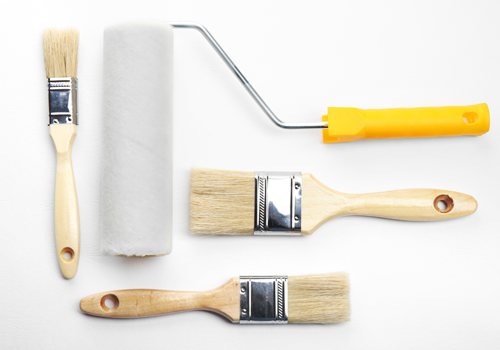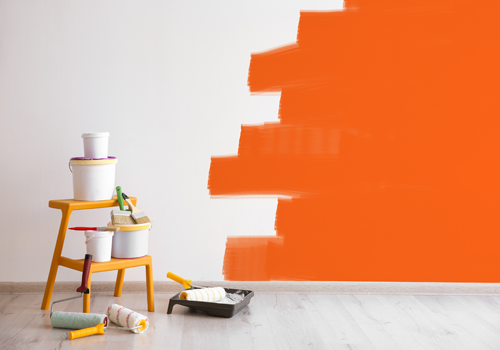1.) Prep the room
The first step which is also the key step is to remove the furniture from the room altogether, if possible. Cover the furniture if you can't remove it from the room. Dust and clean the walls and opt for a towel or vacuum cleaner to clean the surfaces.
2.) Choose the paint colours wisely
Dark areas in the room make colours appear darker. However, don't be afraid of colour. Experiment to see what works and you may be surprised with the results!
3.) Figure how much paint is required
There is nothing more annoying during a painting project than running out of paint halfway through the project. You do not want to have too much paint either. Using a paint calculator can help determine how much to buy.
4.) Use the right tools
The right tools are as critical to a good paint job as good quality paint. Select a roller cover with the appropriate nap size. In general, the rougher the surface, the longer the nap required.
5.) Paint from top to bottom
Plan on working from the top down. Paint the ceiling first, then the walls, and finish with the trim. To avoid lap patches, paint from one wet surface to another. Paint on a previously painted surface or dried surface if it is not possible.
6.) Think about lighting
White paint can look different throughout the day in natural light. It is best to test how it looks in the morning, afternoon, and late-day light. Consider cooler shades of whites that will reflect ambient light from lamps and overhead fixtures.
7.) Wall priming saves on paint
An important step in painting is wall priming. The wall primer seals the walls, offering a good base for the paint to stick to. However, cleaning the walls is extremely important before painting and is one step that cannot be skipped prior to painting.
8.) Brush before rolling
The concept of brushing the corners before or after rolling the walls can be slightly confusing. Use a top-quality brush to paint an inch out from corners, the ceilings and the baseboard.
9.) Prep your roller and paint brushes
Always be sure to prep your roller and brushes before painting. You don't want brush lint or bristles on your walls. Also, don't forget to tape!

10.) Put everything in one place
Save yourself the frustration to get the job done and make sure to put it all in one place. Painting requires brushes, rollers, paint trays, cloths and ladders.

These are ten things we think you needed to know for a hassle-free paint job. Now get set to paint!